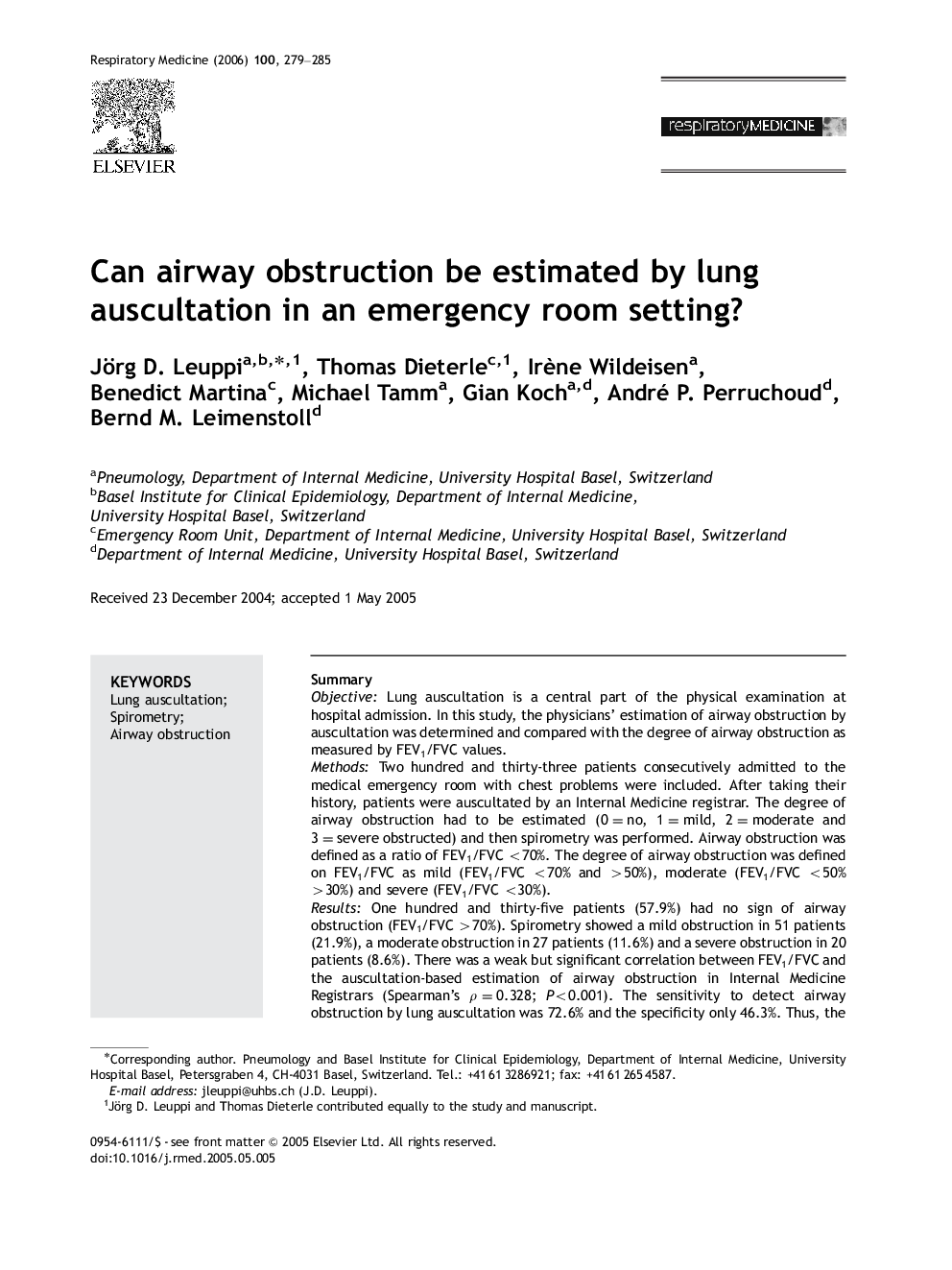| Article ID | Journal | Published Year | Pages | File Type |
|---|---|---|---|---|
| 4212182 | Respiratory Medicine | 2006 | 7 Pages |
SummaryObjectiveLung auscultation is a central part of the physical examination at hospital admission. In this study, the physicians’ estimation of airway obstruction by auscultation was determined and compared with the degree of airway obstruction as measured by FEV1/FVC values.MethodsTwo hundred and thirty-three patients consecutively admitted to the medical emergency room with chest problems were included. After taking their history, patients were auscultated by an Internal Medicine registrar. The degree of airway obstruction had to be estimated (0=no, 1=mild, 2=moderate and 3=severe obstructed) and then spirometry was performed. Airway obstruction was defined as a ratio of FEV1/FVC <70%. The degree of airway obstruction was defined on FEV1/FVC as mild (FEV1/FVC <70% and >50%), moderate (FEV1/FVC <50% >30%) and severe (FEV1/FVC <30%).ResultsOne hundred and thirty-five patients (57.9%) had no sign of airway obstruction (FEV1/FVC >70%). Spirometry showed a mild obstruction in 51 patients (21.9%), a moderate obstruction in 27 patients (11.6%) and a severe obstruction in 20 patients (8.6%). There was a weak but significant correlation between FEV1/FVC and the auscultation-based estimation of airway obstruction in Internal Medicine Registrars (Spearman's ρρ=0.328; P<0.001). The sensitivity to detect airway obstruction by lung auscultation was 72.6% and the specificity only 46.3%. Thus, the negative predictive value was 68% and the positive predictive value 51%. In 27 patients (9.7%), airway obstruction was missed by lung auscultation. In these 27 cases, the severity of airway obstruction was mild in 20 patients, moderate in 5 patients and severe in 2 patients. In 82 patients (29.4%) with no sign of airway obstruction (FEV1/FVC >70%), airway obstruction was wrongly estimated as mild in 42 patients, as moderate in 34 patients and as severe in 6 patients, respectively. By performing multiple logistic regression, normal lung auscultation was a significant and independent predictor for not having an airway obstruction (OR 2.48 (1.43–4.28); P=0.001P=0.001).ConclusionUnder emergency room conditions, physicians can quite accurately exclude airway obstruction by auscultation. Normal lung auscultation is an independent predictor for not having an airway obstruction. However, airway obstruction is often overestimated by auscultation; thus, spirometry should be performed.
